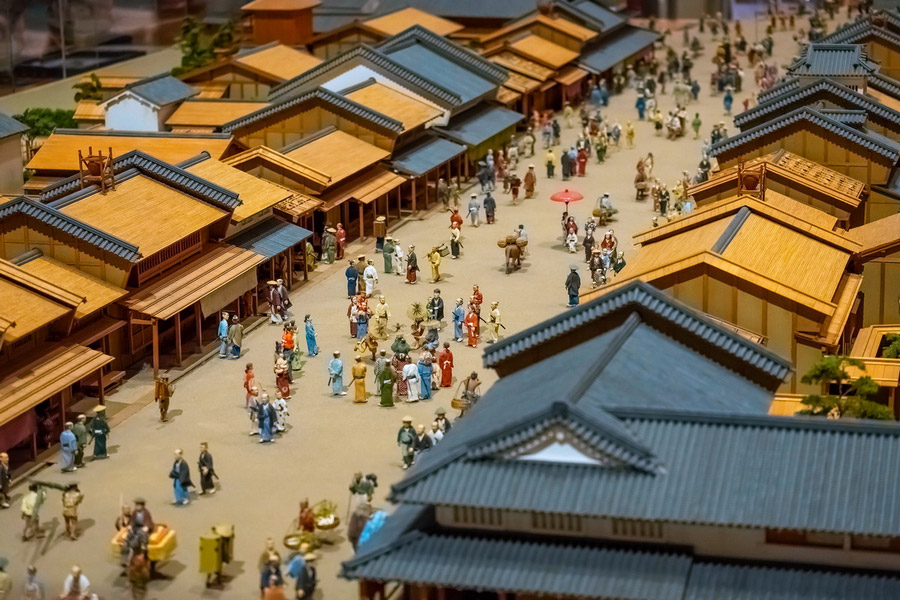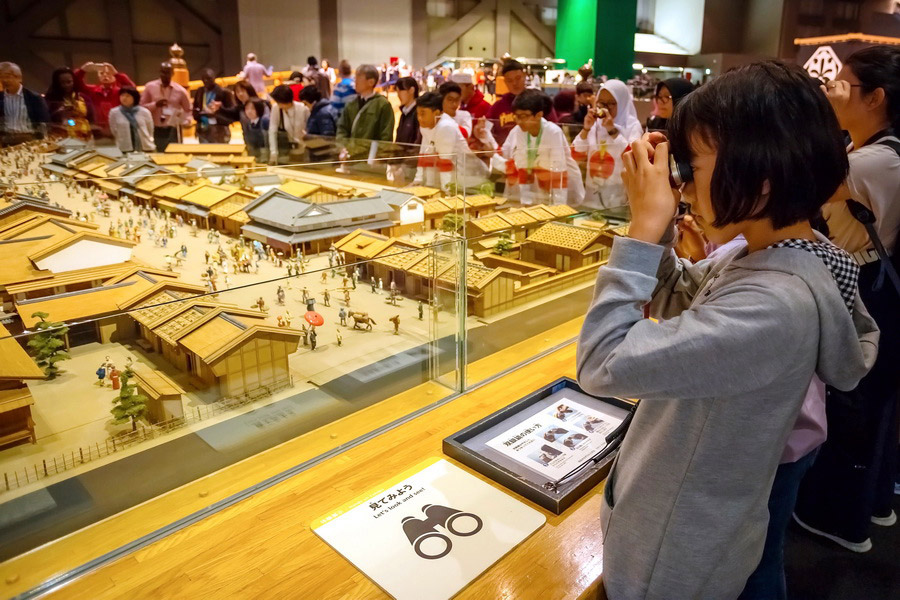Edo-Tokyo Museum

Note: The Edo-Tokyo Museum is closed for renovation from 2022 until the end of 2025.
The Edo-Tokyo Museum (江戸東京博物館, Edo Tōkyō Hakubutsukan) is an exciting destination to learn about Tokyo's evolution from the Edo period (江戸時代, Edo jidai) (1603-1868) to the present day. The museum provides a fascinating insight into the city's history and allows visitors to experience the atmosphere of the past.
History
The Edo-Tokyo Museum is dedicated to the history of Edo, the former name of Tokyo during the Meiji Era (明治時代, Meiji jidai) (1868-1912). Opened in 1993, the museum's primary mission is to preserve and present Tokyo's rich heritage. The Edo period is characterised by the rule of the Tokugawa clan (Shinjitai: 徳川氏, Kyūjitai: 德川氏, Tokugawa-shi or Tokugawa-uji). It is marked by significant changes in Japanese culture and lifestyle. It was an era of stability and isolation from the outside world, yet it also saw rapid internal development. The museum traces the transformation of Edo from a small fishing village to one of the world's largest metropolises, Tokyo.
Exhibitions

The museum is divided into several halls, each highlighting a specific period in the city's history. The permanent exhibition consists of two main sections: the history of Edo and the history of Tokyo. Visitors can explore detailed replicas of antique buildings, clothing, and household items from the Edo Period, along with exhibitions about the city during the Meiji Restoration and the period of modernisation.
One of the most popular attractions is a full-scale replica of Nihonbashi (日本橋 (にほんばし), the iconic bridge that wasthe heart of Edo City in ancient times. This bridge was historically significant for counting all distances in Japan and was constructed in 1603 as the starting point of the Five Routes* (五街道, Gokaidō), or Five Highways: Tō kaidō (東海道), Nakasendō (中山道) also called the Kisokaidō (木曾街道), Nikkō Kaidō (日光街道), Ōshū Kaidō (奥州街道), and Kōshū Kaidō (甲州街道).
The museum vividly depicts daily life in the Edo period, showcasing entertainment, clothing, living conditions, and household items of the time. It also features full-scale reproductions of a kabuki theatre (歌舞伎, かぶき), models of cities from various eras, and an impressive collection of over 2,500 authentic manuscripts, kimonos, and other artefacts.
The Edo era came to an end in 1868 with the onset of the Meiji Restoration, bringing sweeping changes to Japan. One of the key themes in this section of the exhibit is the Western influence on Tokyo's architecture, fashion, and technology. Visitors may discover how Tokyo began to evolve into a modern metropolis, including the establishment of its first factories, railroads, and essential infrastructure.
*The Five Routes refer to Japan's national postal road network during the Edo period, which consisted of five equipped “kaidō” (街道, 'road') postal routes, managed by the central administration, connecting the capital city of Edo (now Tokyo) with other provinces.


